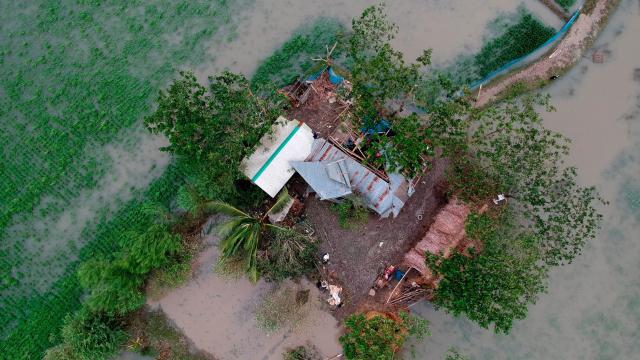If world leaders don’t seriously step up their game to adapt to the climate crisis, we’ll see catastrophic human and economic losses everywhere, a new report from the world’s top global environmental authority warns.
United Nations scientists have told us time and time again that we must curb greenhouse gas emissions to slow climate change. But the fifth edition of the UN Environment Program’s Adaptation Gap Report, released early Thursday morning, says those efforts must be coupled with strategies to adapt to the warming world. That’s because even if emissions drop to zero, we still face a climate unlike anything humanity has ever seen.
Every facet of human life and every corner of the planet comes with adaptation options, and many of the tools we need to adapt to a more frenetic climate are already at our disposal. We can conserve wetlands and mangroves to help cope with surging sea levels, and address landslides and erosion by restoring peatlands — all of which would also lower greenhouse gas emissions. We can create urban green spaces to mitigate flooding during heavy rains and to counter the high temperatures of heat islands. We can even put houses on stilts to keep them above floodwaters.
But world leaders largely haven’t taken these opportunities. Of the more than 1,700 adaptation initiatives in the report, most were in the early stages of implementation. And only 3% have yet demonstrably lowered the local risks they aimed to address.
It’s not that nothing has been done. The authors note that 72% of countries have adopted at least one nationwide adaptation plan, strategy, policy or law, and that the Green Climate Fund — the UN’s grant-making body that provides resources for international climate action — has allocated 40% of its total portfolio to adaptation. Private funding for adaptation is on the rise, too. Adaptation projects are also getting more ambitious as well.
“While earlier projects rarely exceeded $US10 ($13) million, since 2017, 21 new projects have had a value of more than $US25 ($32) million, suggesting that adaptation actions are becoming more comprehensive and potentially more transformative,” the report says. And since awareness of the climate crisis is growing, this upward trend is expected to continue. But none of this is happening nearly fast enough to meaningfully lower the risks humanity faces.
Rich, highly carbon-polluting countries, in particular, need to up their investments for themselves and poorer countries as well. More than half of the adaptation projects that have been launched since 2015, the authors say, have been implemented by the world’s “least developed countries,” which the UN defines as low-income nations facing “severe structural impediments to sustainable development.” In particular, almost 15% of projects are located in small island developing states. They have minuscule carbon footprints, but are likely to suffer some of the climate crisis’ worst effects, and in some cases, could become completely uninhabitable.
The urgent need to handle the covid-19 pandemic has not been great for pushing adaptation forward. The report notes that the economic fallout and focus on dealing with the pandemic has seen adaptation “fall down the political agenda at all levels of governance.” It could also lead to a long-term dip in the availability of money for much-needed projects.
But this doesn’t have to be our fate. In fact, the report explains that if world leaders choose to, they could take on coronavirus-fuelled recessions and the need to lower climate risks at the same time by investing in adaptation as a part of national economic stimulus packages. The same is true of winding down the fossil fuel industry. As of now, most nations aren’t seizing that chance. But if they do, adaptation could play a key role in boosting economies, creating much-needed jobs in the adaptation sector to battle employment crises, and also ensuring we have a future on our planet.
